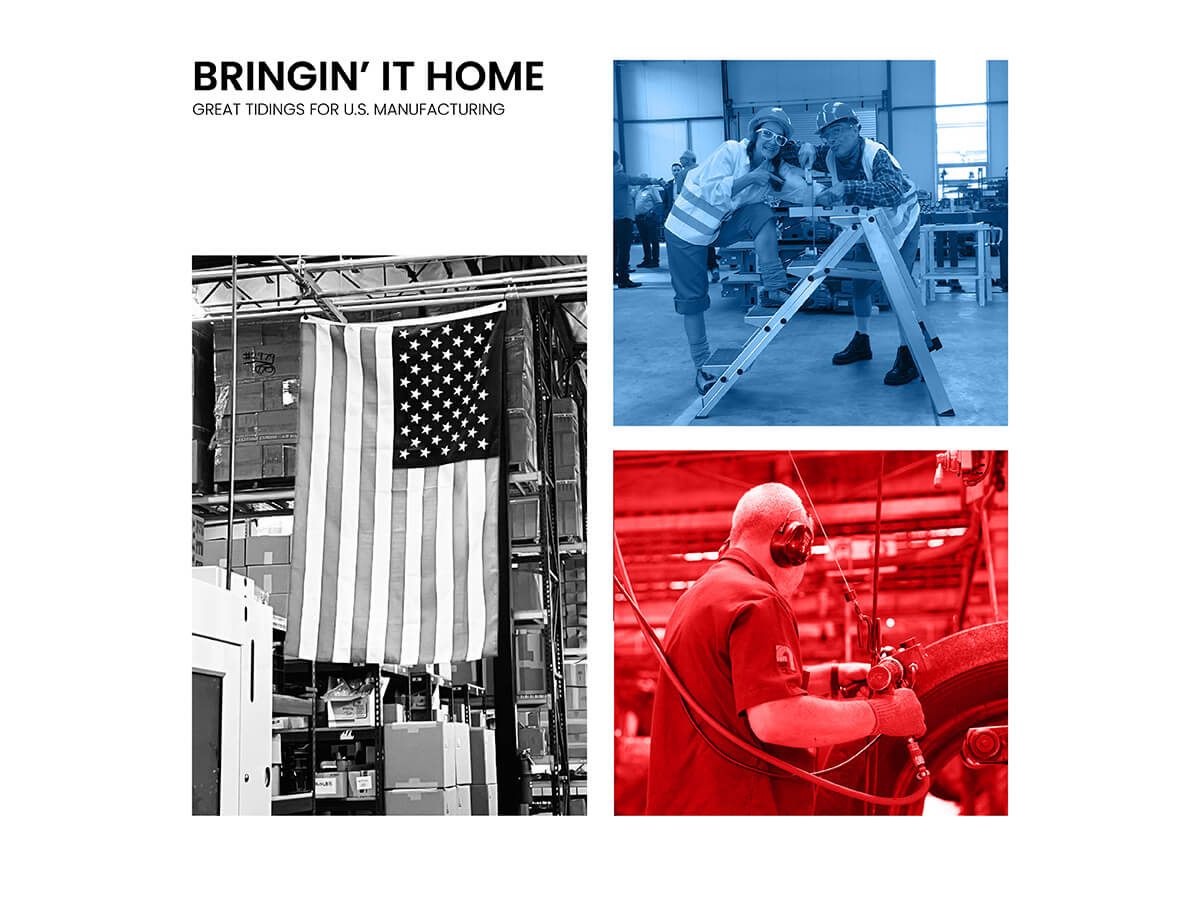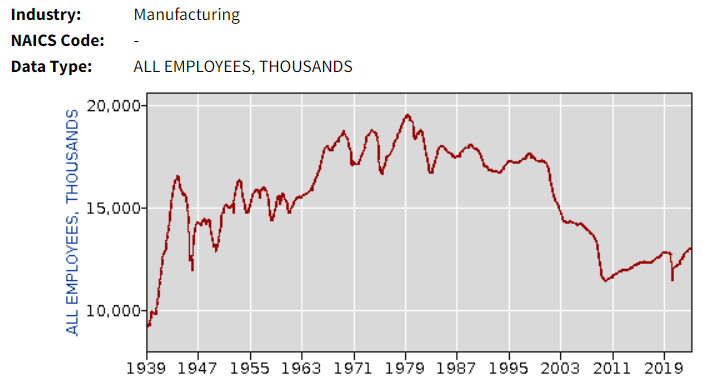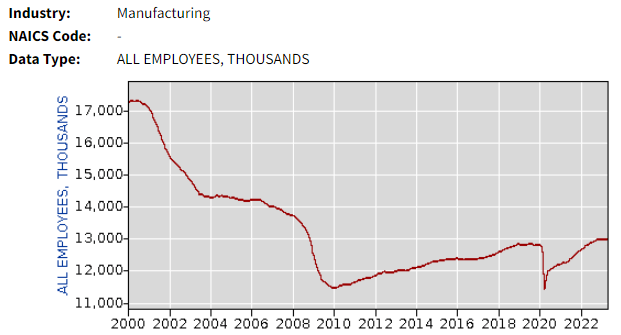
Why do we love American manufacturing?
That’s an easy one. We ARE an American manufacturer. It’s a point of pride.
…But why should anyone who doesn’t work in manufacturing love it?
That’s also an easy one. American manufacturing means independence, prosperity, and unity for Americans everywhere. Buying American-made products is a very patriotic thing to do.
The manufacturing sector provides solid, middle-class jobs. Strong manufacturing health provides regional and national security. The better we are at it, the better off we all are.
It’s more than just economics; buying American-made products provides greater stability, lowers crime, makes for fewer early deaths, and increases overall quality of life. See our related article: The Beauty of American Made
About those numbers, though…
Of course, economic numbers are one of the most helpful ways to measure the health of our nation’s manufacturing prowess, so we do look at those.
Just imagine how pleased we were to see the latest reporting!
Around 800,000 U.S. manufacturing jobs in the last couple years. Steady growth. Impactful investment.
This is not hyperbole, and it’s not a platitude. American manufacturing is on the rise.
Like a phoenix
It’s no secret that the first part of the 21st century was rough on manufacturers in the USA. The late 1990s began an extended period of decline in manufacturing jobs numbers.
The sector really bottomed out in the Great Recession of 2007-2009, landing in absolute numbers as low as they’d been since World War II…and with a population literally more than double the size. As a percentage of the population, the manufacturing sector was as bleak as it could be.
But something has changed.
Over the last decade, our country’s manufacturing sector has shown growth — steady, healthy growth. And it’s real.
Look at the chart. That loss caused by the COVID-19 pandemic? It’s pretty much gone. Job growth is right back on track to where it should be.
Manufacturing is doing well by numbers, and it’s not just a blip. There is momentum here at home for long term growth.
The sector has added roughly 800 thousand jobs in last couple years, according to the Bureau of Labor Statistics at the U.S. Department of Labor. That’s a massive gain!
Are we back up to the peak of manufacturing? Not yet. Quite a long way, in fact. But more than ten years of growth is an incredibly promising sign.
What does it mean, really? The jobs numbers reflect two things:
- Success of existing manufacturers
- Investing in future success of manufacturers
Not only are American factories more productive than ever, there’s more investment than ever. Even the U.S. government has been actively steering efforts and incentives to the long-neglected manufacturing sector. Congress has passed several bipartisan, pro-manufacturing bills in the last few years, with diverse scopes for all initiatives, backups, and failsafes to ensure continued public and private investment through 2030.
Bringin’ it home…
Jobs that were lost overseas are returning, too. According to leading global management consulting firm Kearney, a staggering 96% of American companies have either already reshored some if not all production to the U.S., or are evaluating how to do so in the near future. This is an increase from 78% a year ago, and from 70% two years ago (Kearney/NIST).
It’s worth noting, too, that while U.S. companies are bringing jobs back, our biggest manufacturing competitor — China — is now seeing companies ship jobs to other countries like India, Thailand, Vietnam, Mexico, Poland, and more (Business Insider). The tides of competition seem to be turning on a very big scale.
A good problem to have
Oddly enough, there may be such a thing as too many jobs. The U.S. is currently on pace to have more manufacturing jobs available than people to fill them by 2030 (National Association of Manufacturers).
Like, a LOT more jobs. Possibly millions.
Luckily, this is a solvable problem, especially since it’s been identified so early. Plenty of companies are already working on solutions, including training their own talent pipelines, offering trade school incentives, and more.
We’re going to need real people to fill those jobs.
So…How can you help?
There are several ways we can all help on this front. You can buy American — that’s always a good idea. But as mentioned before, it’s more than just economy. It’s peace of mind. It’s opportunity. It’s satisfaction.
Also, you can demand government action (locally and nationally). If you’ve got the extra money, you can invest in manufacturing companies with solid talent creation and retention programs.
But probably the most helpful thing you can do is inspire tomorrow’s workers—today.
If somebody made something for you, say “Thank you for making this!”

A little bit of appreciation goes a long way. The more we as a country can learn to express gratitude and appreciation for our manufacturers, the happier they’ll be.
The happier they are, the more other people will see happy workers in manufacturing, and they’ll want in, too.
It’s a form of social proof, and it’s a phenomenon that spirals upward — the same direction manufacturing is going.

Buy American, thank the folks who made what you bought, and have a happy Independence Day!
Sources and Additional Reading:
The US is building factories at a wildly fast rate — Business Insider
Even Chinese companies are moving supply chains out China to avoid geopolitical risks. Here are the 6 places they’re heading for instead. — https://www.businessinsider.com/chinese-supply-chains-moving-companies-outside-mainland-2023-4
2.1 Million Manufacturing Jobs Could Go Unfilled by 2030 — National Association of Manufacturers
News Release, June 2, 2023 – Bureau of Labor Statistics
Databases, Tables & Calculators by Subject – Manufacturing — Bureau of Labor Statistics
Modeling the Inflation Reduction Act Using the Energy Policy Simulator — Energy Innovation
America is ready for reshoring. Are you? — Kearney
Reshoring and the Pandemic (Infographic) — National Institute of Standards and Technology


